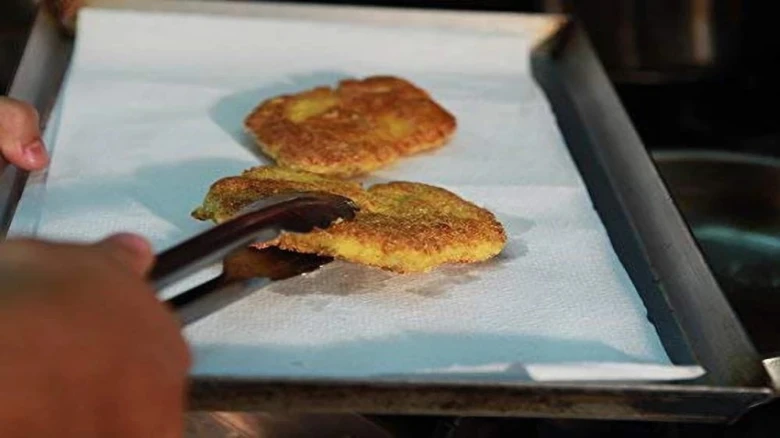Beyond the issue of soggy food, the indiscriminate use of tissue paper in the kitchen raises a host of other concerns...
Digital Desk: Kitchen hacks are done for their ability to streamline cooking processes, save time, and elevate the flavors of our favorite dishes. However, not all kitchen tricks are created equal. One seemingly harmless practice, commonly used in households worldwide, actually poses risks to both food quality and environmental health.
If you're among the many who reach for tissue paper to stain fried foods, it's time for a rethink. Contrary to popular belief, using tissue paper can make fried items, like pakodas, soggy. According to kitchen and home guide Manju Mittal, "tissue makes the food go soggy."
But why does this happen?
Experts explain that tissue paper lacks the ability to effectively regulate moisture. As a result, fried food items placed on tissue paper may become soggy over time as moisture accumulates beneath the paper, compromising their taste and texture.
Beyond the issue of soggy food, the indiscriminate use of tissue paper in the kitchen raises a host of other concerns, as highlighted by experts:
1. Health Hazard: Tissue paper, not designed for food storage, may contain chemical substances that can migrate into food, posing a health risk to consumers.
2. Change in Food Consistency: Storing food items with tissue paper can alter their texture and consistency, robbing them of their crispy exterior and smooth interior.
3. Environmental Impact: Improper disposal of tissue paper contributes to environmental pollution, including waste blockage, water pollution, and solid waste accumulation.
4. Fire Risk: Tissue paper containing acidic substances increases the risk of fire when in contact with hot, deep-fried foods, potentially emitting toxic fumes and contributing to air pollution.
So, what can be done to mitigate these risks and preserve food quality? Experts recommend the following alternatives:
Use Oil-Absorbing Materials: Opt for paper towels, wire racks, or specially designed oil-absorbing mats to drain excess oil from fried foods without compromising their texture.
Air-Tight Containers: Store fried foods in air-tight containers lined with oil-absorbing towels to maintain freshness and prevent contamination.
Paper Bags: Utilize breathable paper bags to preserve crispiness and flavor while keeping pests at bay.
Air Drying: Allow fried foods to air dry on a wire rack for a short duration before serving or storing to remove excess oil without sacrificing crispiness.
By assuming these alternative practices, individuals can protect both the quality of their food and the health of the environment, ensuring that kitchen hacks remain a boon rather than a bane.

Leave A Comment